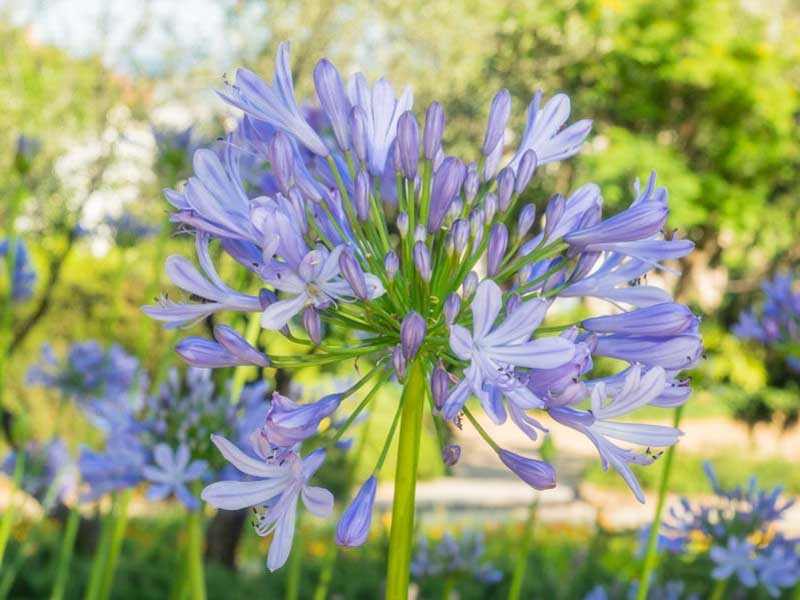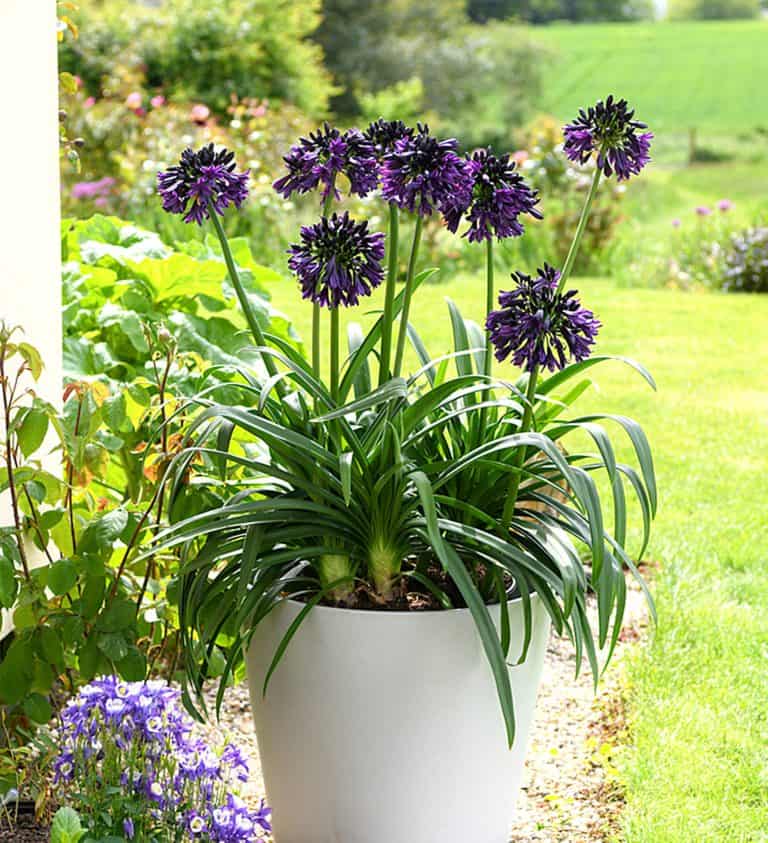Understanding the Art of Agapanthus Care: Crucial Steps for Healthy And Balanced Development and Dynamic Blooms
In the realm of cultivation, the farming of agapanthus stands as a fulfilling endeavor for those that seek to support these classy flowering plants. From picking the ideal range to mastering trimming techniques, the trip in the direction of growing flourishing agapanthus plants is complex and holds the vital to opening the complete capacity of these agricultural gems.

Selecting the Right Agapanthus Range

When selecting the ideal Agapanthus variety for your garden, think about factors such as environment suitability, blossom shade, and growth practice. In addition, take into consideration the environment in your area to make sure the Agapanthus selection you select can prosper in your particular problems. Understanding the growth behavior of different Agapanthus selections is important for proper positioning within your yard.
Perfect Planting Problems
Considering the optimum ecological needs is crucial for effective Agapanthus growing. Agapanthus flourishes in well-draining dirt with a somewhat acidic to neutral pH level. When planting, choose an area that obtains full sunshine to partial shade. In hotter climates, supplying some mid-day shade can stop scorching of the fallen leaves. Agapanthus plants are delicate to cool temperatures and ought to be protected from frost during winter season months.
To ensure healthy growth and vibrant blossoms, plant Agapanthus light bulbs at a deepness of regarding 2-4 inches and area them 8-12 inches apart. Mulching around the base of the plants helps preserve moisture and reduces weed growth.
Watering and Fertilizing Tips
Preserving proper dampness degrees and offering important nutrients are crucial elements in the treatment regimen for Agapanthus plants. When it comes to sprinkling Agapanthus, it is important to strike a balance. These plants like regularly wet soil yet are vulnerable to root rot if overwatered.
Feeding Agapanthus is essential for promoting healthy growth and respected blossoms. Use a balanced fertilizer, such as a 10-10-10 formula, in the very early springtime as new growth emerges. By adhering to these watering and feeding ideas, you can guarantee your Agapanthus plants prosper and generate vibrant, lasting flowers.
Trimming Strategies for Agapanthus
Pruning Agapanthus plants at the appropriate times and with correct strategies is crucial for keeping their health and advertising optimal growth and flowering. The optimal time to trim Agapanthus remains in late winter or very early springtime prior to new growth emerges. check these guys out Start by removing any dead or yellowing fallen leaves near the base of the plant. Cut them as short as feasible without harming the arising shoots.
For flowered stems, wait up until the blooms have withered and after that cut them back to the base. This not only cleans up the plant's appearance but also encourages the growth of brand-new blossom buds. Deadheading invested blossoms can likewise redirect the plant's energy into creating more flowers rather than establishing seeds. However, if you wish to gather seeds for propagation, leave some flowers to fully grown and completely dry on the plant.
Bear in mind to make use of clean, sharp tools to make specific cuts and minimize the threat of introducing conditions. Agapanthus. Regular trimming will certainly help maintain your Agapanthus looking healthy and neat while making certain a bountiful display screen of attractive blossoms
Handling Common Bugs and Illness
After ensuring correct pruning directory strategies for Agapanthus, it is important to deal with usual insects and conditions that can affect the health and vigor of these plants. Agapanthus plants are typically durable however can still fall victim to specific problems. One common bug that affects Agapanthus is the Agapanthus gall midget. This tiny, orange fly lays its eggs in the vegetation, resulting in altered growth and blossom buds that fail to open up. To battle this insect, prune and damage any affected plant components and consider making use of insecticidal soap.
In addition, Agapanthus plants can endure from origin rot if they are grown in poorly draining dirt. By being watchful and taking timely activity versus pests and diseases, you can help your Agapanthus plants grow and produce vibrant blooms. Agapanthus.

Conclusion
Finally, understanding the art of agapanthus treatment includes choosing the right range, offering suitable growing conditions, proper watering and feeding, suitable pruning strategies, and attending to common parasites and conditions. By complying with these important actions, you can make sure healthy and balanced growth and vivid blossoms for your agapanthus plants. Remember to regularly keep track of and preserve your plants to promote their overall health and long life.
To make certain healthy and balanced growth and lively flowers, plant Agapanthus light bulbs at a depth of concerning 2-4 inches and area them 8-12 inches apart. By following these watering and feeding ideas, you can guarantee your Agapanthus plants thrive and create vivid, lasting blossoms.
One usual parasite that affects Agapanthus is the Agapanthus gall midget. Additionally, Agapanthus plants can experience from root rot if they are planted in inadequately draining dirt. By basics following these crucial steps, you can make certain healthy development and vivid flowers for your agapanthus plants.
Comments on “Just how to Plant and Maintain Agapanthus in Your Yard”